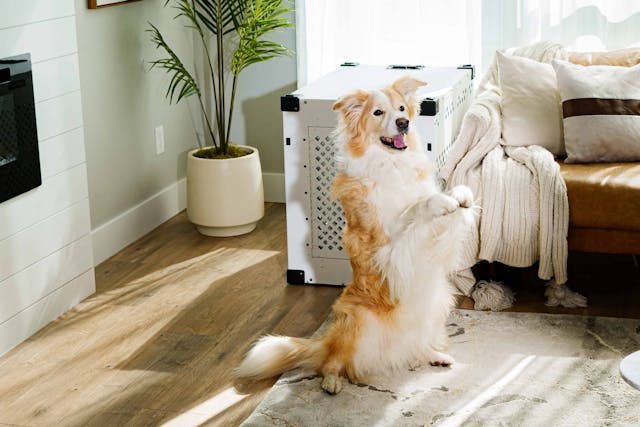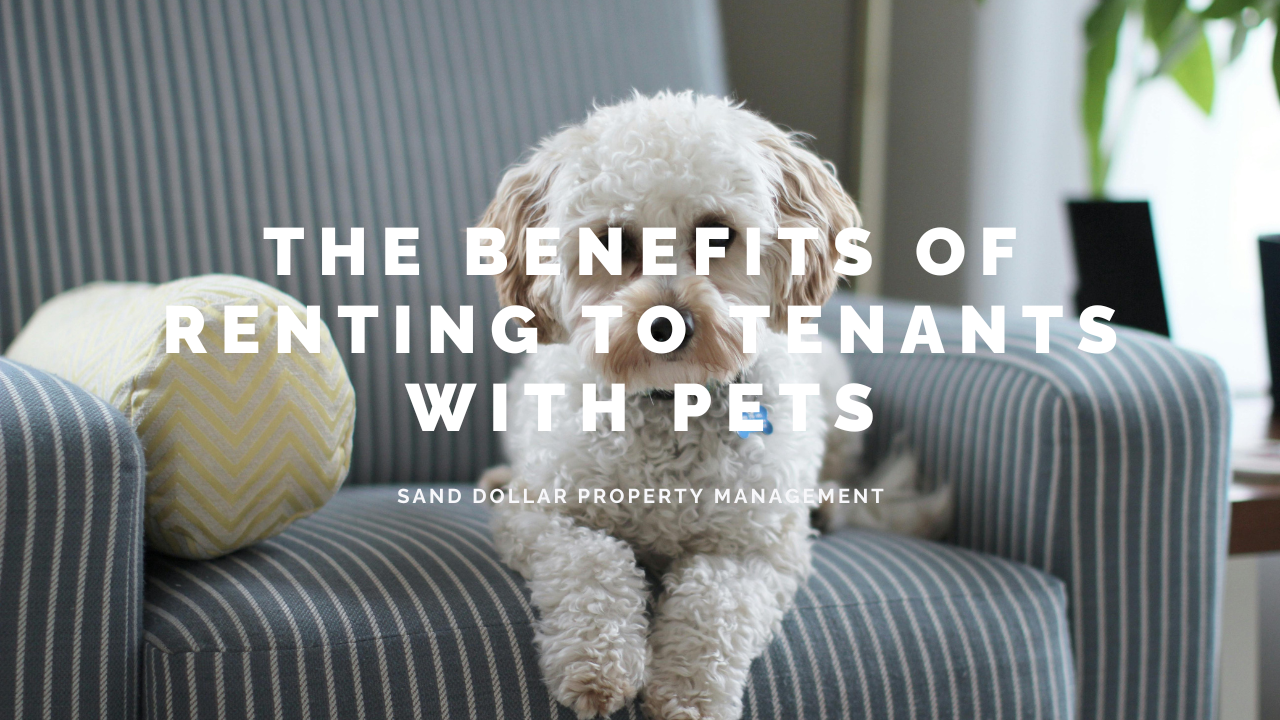Key Takeaways
Boosts Rental Income: Pet owners are often willing to pay higher rent or pet-related fees, increasing a landlord’s revenue potential.
Attracts Long-Term Tenants: Tenants with pets are more likely to stay longer, reducing turnover and vacancy costs.
Expands Tenant Pool: Accepting pets widens your pool of qualified renters, making it easier to fill vacancies.
Encourages Responsible Behavior: Pet owners tend to be more responsible, which can translate into better tenant habits like paying rent on time and caring for the property.
Pet ownership is common, and as a landlord, you may be considering whether to allow tenants with pets. Before deciding, it's important to weigh the benefits and risks.
CONTACT US TODAY FOR A FREE RENTAL ANALYSIS
While accepting pet owners can be rewarding, it requires careful consideration and clear terms in your lease agreement to ensure a positive experience for both you and your tenants.
Benefits of Welcoming Residents with Pets
1. Increase in Rental Income
Pet owners are often willing to pay extra fees, such as pet deposits or monthly rent, allowing landlords to generate additional income. Offering services like grooming or pet sitting can create further revenue streams. Be sure to check local laws for any restrictions on pet-related charges.
2. Happier, More Content Renters
Pets can enhance the quality of life for their owners, contributing to greater tenant satisfaction. A pet-friendly apartment fosters a sense of homeliness, making tenants more likely to renew their lease.
Since finding pet-friendly housing can be challenging, tenants with pets are often more committed to staying long-term in a property where their furry companions are welcome.
3. Wider Pool of Potential Renters
Limiting your rental to non-pet owners can drastically reduce the pool of potential tenants. By opening up to pet owners, you expand your tenant base and increase your chances of finding renters who meet your screening criteria.
However, it’s equally important to conduct a pet screening process to ensure the pet is suitable for the property.
4. Long-Term Tenants and Loyalty
Pet owners tend to stay in one place longer, as they seek stability for their pets.
Tenants with pets are often less likely to relocate frequently, making them valuable long-term renters. This helps landlords maintain a steady cash flow and reduce the costs associated with tenant turnover and marketing.

5. More Responsible Renters
Owning a pet often requires a level of responsibility that can translate into better adherence to property rules.
Pet owners are accustomed to routines, such as walking their pets and ensuring they are well cared for. This sense of responsibility often carries over to their behavior as tenants, making them more likely to pay rent on time, respect property rules, and maintain the rental space.
6. Ability to Charge a Higher Rent
With the added risks that come with allowing pets, landlords can justify charging a higher security deposit.
Many pet owners are accustomed to paying extra for this coverage and are often willing to accept these terms. This ensures that if any damage occurs as a result of the pet, you have a safety net to cover the cost.
Risks and Drawbacks of Pet-Friendly Rentals
1. Potential for Property Damage
Pets, especially puppies or large dogs, can sometimes be destructive. Chewing on furniture, scratching floors, and tearing up rugs are common issues.
If you offer furnished units, the risk of damage is even higher. It's important to consider these potential risks when deciding to allow pets in your rental.
2. Noise Complaints From Neighbors
Dogs barking excessively, especially at night, can lead to complaints from neighbors.
LEARN HOW TO CALCULATE YOUR ROI
If your unit lacks soundproofing, noise from pets can disturb other tenants and result in warnings or fines. To avoid this, it’s essential to set clear expectations with your pet-owning tenants regarding noise and to ensure pets are well-trained.

3. Risk of Injury
While pets are generally friendly, there is always a chance that a pet may bite or injure someone if provoked or threatened. This could lead to conflicts, lawsuits, or medical bills.
As a landlord, you’ll need additional insurance to cover such incidents. It’s crucial to carefully screen pets to ensure they pose minimal risk to other tenants or visitors.
Stay Compliant with Fair Housing Laws
Landlords must adhere to Fair Housing laws, which protect individuals with disabilities. These laws state that tenants with disabilities are allowed to have assistance animals, such as service dogs, regardless of your pet policy.
Service animals are not considered pets, so even if you designate your property as pet-free, you must still allow tenants with service animals.
Additionally, it's essential to review your local and state laws regarding pets. Some regions have specific regulations about the types of pets allowed, the amount of pet-related fees you can charge, and how you can manage tenants with pets.
Review Your Insurance Policy
Before accepting tenants with pets, review your insurance policy to ensure proper coverage for pet-related incidents. You may need additional liability coverage for pet injuries and should check for any breed restrictions with your provider to avoid unexpected liabilities.
Attach a Pet Addendum to the Lease Agreement
Your lease agreement should include a clear pet policy, specifying any additional fees, pet deposits, or responsibilities for pet owners. A pet addendum is a formal, legally-binding document that outlines the rules and expectations for pet owners.

This addendum should include:
- Pet deposit amount
- Monthly pet fee (if applicable)
- Rules on pet behavior (e.g., no excessive barking)
- Restrictions on the number or breed of pets allowed
- Tenant responsibility for damages caused by pets
- Insurance requirements for tenants with pets
Having a pet addendum in place ensures that you can enforce your pet policies consistently and have a clear reference if any issues arise.
Bottom Line
Welcoming tenants with pets can provide significant advantages, such as increased rental income, long-term tenants, and a broader tenant pool.
However, it also comes with potential risks, including property damage, noise complaints, and possible injury. By carefully screening pets, setting clear pet policies, and ensuring proper insurance coverage, you can mitigate these risks.
FIND OUT WHETHER RENTING OR SELLING IS THE RIGHT CHOICE FOR YOU
If you're unsure about managing tenants with pets or prefer a hands-off approach, working with a property management company can help.
A professional property manager can assist with tenant and pet screening, enforcing policies, and handling maintenance issues related to pets, ensuring your rental experience remains smooth and profitable.
If you're ready to expand your rental property’s appeal and need help managing pet owners, contact Sand Dollar Property Management today!












